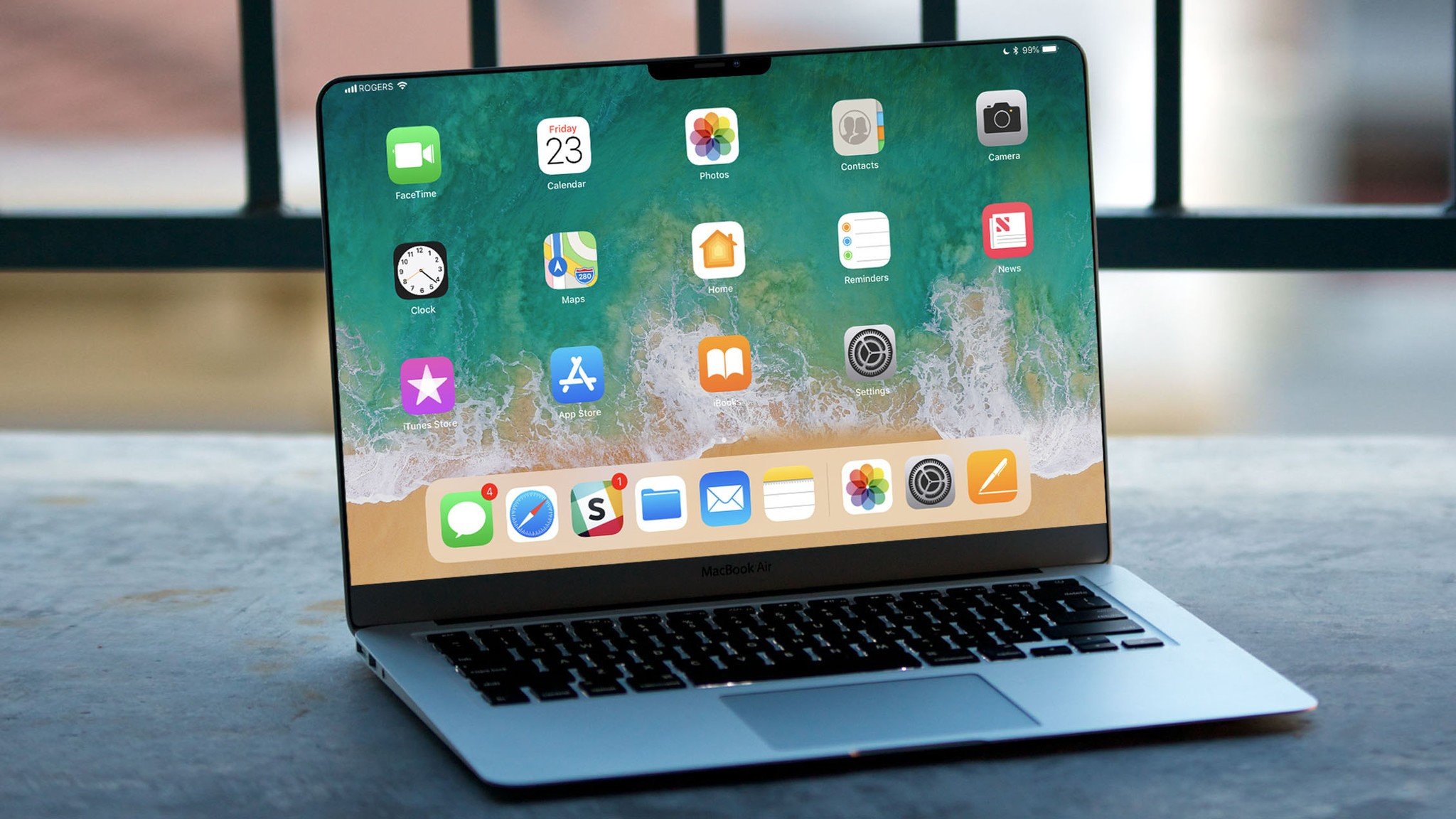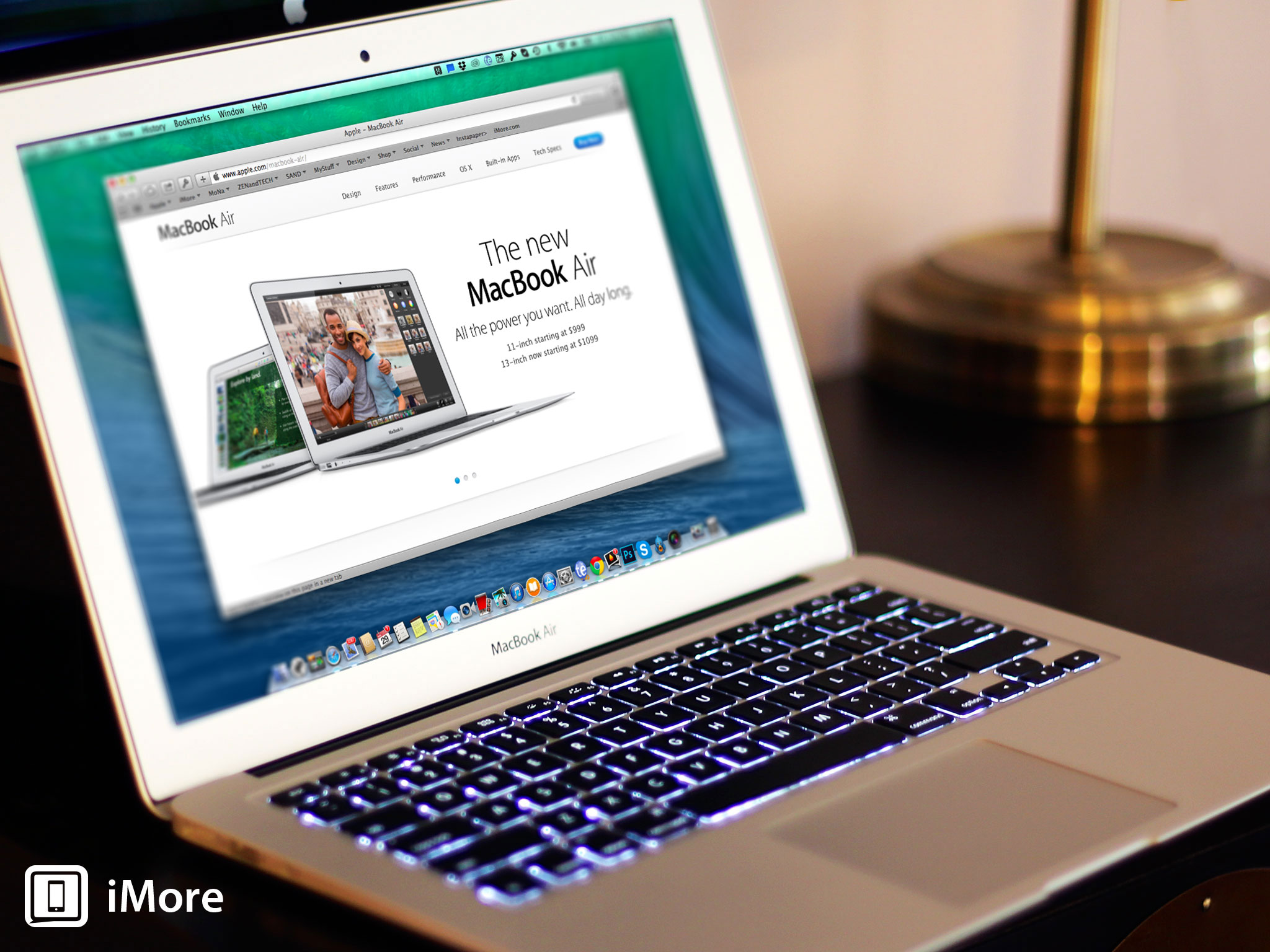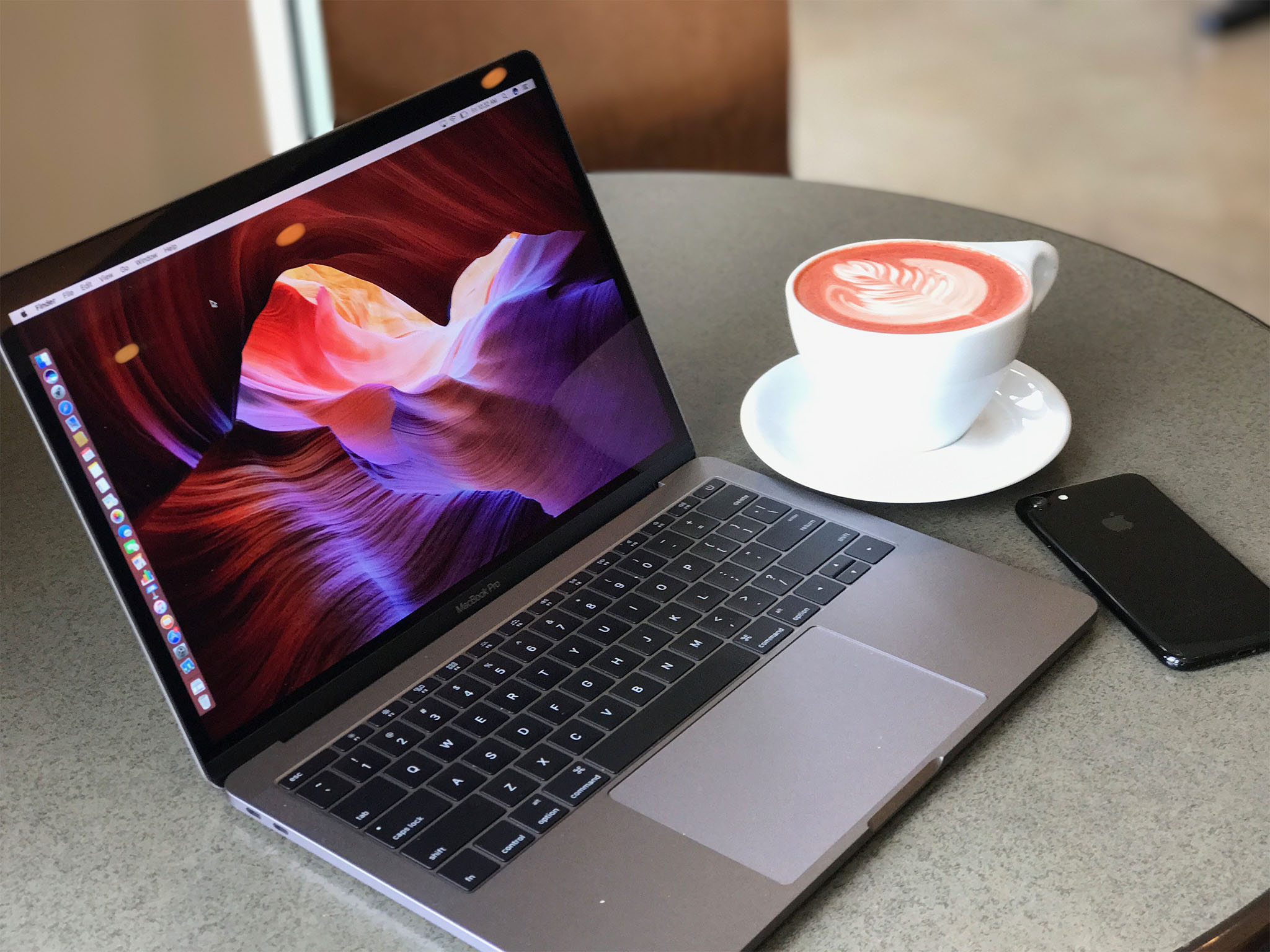Apple's next entry-level MacBook: What is it and... why?

John Gruber beat me to it. I'd been planning this video for a while but, yesterday, he hit the Daring Fireball publish button on his thoughts about the rumored new MacBook before I could even get mine online. And, they were great:
So if all these reports are true and Apple is coming out with a new entry-level portable with a 13.3-inch display and reduced bezels, the footprint of the device should shrink a bit too. That's why the current 13.3-inch MacBook Pro has a smaller footprint than the current 13.3-inch MacBook Air (11.97 × 8.36 inches vs. 12.8 × 8.94 inches). So maybe it's something obviously distinguishable from the current MacBook Air, even while the lid is closed — sort of a middle ground between the MacBook Pro and 12-inch MacBook. Something that keeps the Air's traditional teardrop-shaped profile, but noticeably thicker and larger than a 12-inch MacBook. If that's the case, I'd also expect modernized ports (USB-C/Thunderbolt 3 only?), and a modernized keyboard (alas) and Force Touch trackpad. Then, rather than repudiating the last three years of Apple's MacBook design trends, this new entry-level MacBook would embody them.
So great, I almost didn't put mine up. Almost. Thing is, the topic still nagged at me. John covered a lot of possibilities but, what Apple's doing has never interested me as much as why the company is doing it. And that, I think, is still worth talking about.
If you're not up to speed on all the new MacBook rumors, let me timeline it for you really quick.
Entry-level MacBook rumors
Back on March 1, on the VECTOR podcast, one of the best industry analysts in, well, the industry — Ben Bajarin — laid out the value prop for a new MacBook Air:
Honestly, there's a slot that I think if Apple chose to could seriously rain on the PC OEMs' parade if they brought updates to the MacBook Air with Retina for example. If all they did was update the Air with Retina and some modern specs and priced it around $899, they would take share like it's no one's business. It would really, really disrupt PC sales in a significant way.I know they know where those gaps are. I think they see what's happening in the PC market also. I just don't know if that's something that they would do this year.But if they wanted to just completely rain on their parade and boost Mac from five, seven million and go way higher than six million units a quarter, that's what they'd do. They'd come in at 899 with an updated MacBook Air at Retina and modern specs. It would be a force.
On March 3, financial analyst and supply-chain information exfiltrator Kuo Ming-Chi published a research. MacRumors covered it:
We expect Apple (US) to roll out the new MacBook Air with a lower price tag in 2Q18.
On March 7, Taiwan's Economic Daily News chimed in with:
The 13-inch low-priced MacBook will fall between $799 and $899, down from $100 to $200
It further implied that, after seeing the growth of the less-expensive 9.7-inch iPad in 2017, Apple was eager to see what a less-expensive MacBook, 6.1-inch iPhone, and maybe even HomePod, would do in their markets.
Master your iPhone in minutes
iMore offers spot-on advice and guidance from our team of experts, with decades of Apple device experience to lean on. Learn more with iMore!
The occasionally accurate DigiTimes added:
The 13.3-inch a-Si panels for the new notebook feature the same resolution as Apple's 13.3-inch MacBook Pro at 2,560 by 1,600.
Then, on March 23, Bloomberg said it was coming, put a time out on everyone's rumor fun:
A new, cheaper MacBook laptop is in the works and likely destined to replace the MacBook Air at a price less than $1,000, but it probably won't be ready in time for next week, the people said.
On April 30, DigiTimes said we'd have to wait until the fall:
The sources said that Apple has informed supply chain partners that mass production of its new notebook model for 2018 will not kick off until the second half of the year, yet without explaining the rescheduling move. Some partners speculated that the postponement might be caused by problems with some key components such as processors.The planned new MacBook Air will have a slim design, and come with Retina high-resolution screen and Intel's latest notebook processor. Unit price for the new model is expected to be lowered from US$999 to US$899 or down further to US$799, which in turn may push up sales of MacBook series by over 10% in 2018 to regain part of market shares held by Chromebooks, according to market observers.
Apple's spring education event came and went. Ditto WWDC in June. Even a July MacBook Pro update, with a nary an additional peep from the MacBook rumor gallery.
Not until August 15, when financial analyst firm TrendForce said:
Apple already released a new MacBook Pro at the start of the quarter and will release a new MacBook Air at the end of the quarter
August 17, DigiTimes was back saying the new MacBook would be powered by Intel's Kaby Lake Refresh… but also be well over $1000, which, yeah, no longer sounded very entry-level at all.
Apple is scheduled to roll out its entry-level MacBook series featuring Intel's 14nm Kaby Lake processor in September's product launch conference. The model is expected to be priced at US$1,200, according to industry sources.
On August 20, Bloomberg also came back with some additional information on what it was still calling a low-cost MacBook:
The new laptop will look similar to the current MacBook Air, but will include thinner bezels around the screen. The display, which will remain about 13-inches, will be a higher-resolution "Retina" version that Apple uses on other products, the people said.
And that brings us to where we are today.
But, I'm going to jump back just one more time to provide some context for where we're going next. Stick with me. This is important.
From MacBook to Air... and back

Once upon an intel-transition, Apple had the original MacBook. It was white plastic — or black, if you coughed up an extra $100, and it was good. It was fine.
Then, in 2008, Steve Jobs took to the same stage he'd announced the original iPhone on just a year earlier and pulled what looked like magic out of a manilla envelope: The MacBook Air.
The world's thinnest laptop at the time, it had a 13.3-inch display, full-sized MacBook keyboard, single USB-A port tucked inside a Millenium Falcon-like hatch, no optical drive, the first real multi-touch trackpad, and it started at… $1,799.
I had one. I used it for almost a year. It was expensive. It was compromised. It felt like the future but it didn't quite fit the present. Not yet.
Not until 2011, when Steve Jobs went Back to the Mac, and Apple went next-generation on the Air.
Rumor had it Steve walked into a meeting with the Mac team one day, dropped the iPad on the table, said what it could do, and asked why the Mac couldn't do the same: Instant on, great battery life, amazing standby life, completely solid state storage, and even thinner and lighter to be even more mobile.
So, that's what they delivered, but along with even more computing conveniences. Two USB-A ports instead of just one and no longer tucked away, a Thunderbolt 2 port, and an SDXC card reader. But the biggest news was the price: $$1299, at least at first. By 2014, it dropped to just $999.
Steve Jobs called it the future of notebooks and it was — the template Intel and every other manufacturer raced to ultra-copy as ultra-book.
(And yeah, I'm totally ignoring the 11-inch model for now — that was $999 at launch, dropped to $899 in 2014, and was end-of-lined in 2016. RIP.)
At $999, the 13-inch Air literally replaced the original MacBook becoming not just Apple's ultra-mobile Mac, but its entry-level Mac as well.
Then, in 2015, Apple brought the MacBook back.
At 12-inches, it was even thinner and lighter than Air. In fact, rumor has it Apple briefly considered calling it the MacBook Stealth before thinking better of it.
It had a Retina display, the first force touch trackpack, the first butterfly and dome switch keyboard, the first fanless Intel Core M chipset, the first gold — and eventually rose gold finish — the first terraced battery, and the first USB-C port on a Mac.
If the Air was the love child of Mac and iPad, the MacBook was an iPad… just in Mac clothing. Down to the single port.
It wasn't that Apple was trying to kill traditional Mac I/O either. It was that the company was literally thinking of the iPad age, the wireless age. No ports was the goal but, because it had to charge, it still had to have one, so why not make it as multi-functional as possible?
But, Apple's aggressive futurism came at a price: Starting at $1299.
It wasn't the $1799 of the original Air, but it wasn't the $999 of the then-current Air either.
It led to some, even internally, affectionately calling it the ManagerBook: Something super sleek and sexy to take with you while walking, driving, or flying between meetings, leaving your bigger, more powerful Macs back where you did your real work.
Many assumed, myself included, that the price of the MacBook reflected all the new technologies and manufacturing processes Apple was using to bring the next future-of-notebooks to market in the then present, and that it, like the Air before, the price would drop over time.
It seemed both elegant and inevitable: As the Air replaced the MacBook so would the MacBook return to replace the Air. Poetry and symmetry.
But the MacBook, which was always expensive to make, never came down in price. It's still the same $1299 today that it was when it was introduced.
And that brings us full circle to the rumors of the new, less-expensive MacBook.
MacBook Next

John, on Daring Fireball, while trying to reconcile all the rumors, listed three possible ways Apple could go:
1. Taking the existing MacBook Air and refitting it, Star Trek-style, with a Retina display and current-generation Intel chipset.
That, I think was something Apple considered doing at one time, but the platform may not have been able to handle it back then — or the 12-inch MacBook concept simply sucked all the air (sorry!) — out of that plan.
Doing it now might be possible but it would only fix the inside. The outside is a couple of design generations behind and, as John points out, it ignores everything Apple has done with the lineup to date. (And also ignores the rumors of thinner bezels.)
2. Taking the existing 12-inch MacBook and adding a 13- or 14-inch version to the lineup.
Apple seems to like having two display options per product, for the most part, and rumors of a 14-inch MacBook predate rumors of a new Air by several years. Since the 12-inch launched, basically. Many MacBook fans are, not surprisingly, even bigger fans of the idea of an even bigger MacBook. And maybe that fits with new rumors that the starting price will be higher. A 14-inch MacBook at $1,200 could leave room for a 12-inch MacBook at $999. But that platform hasn't shown much downward elasticity when it's come to price. It's also yesterday's future, not today's.
3. Taking the existing 13-inch MacBook Pro without Touch Bar and price-dropping it to $999
Apple didn't update the 13-inch MacBook Pro without Touch Bar back in July when the new with Touch Bar models were released. That could have been so it could announce a price-drop on stage. After all, when the new MacBook Pro was announced, Apple explicitly positioned the without Touch Bar model as the MacBook Air with Retina people had been waiting for. At $1299, that was tough to digest. At $999, maybe it's no longer so tough. But, then again, Apple didn't update any of the other Macs in July, and price dropping an existing product doesn't move things forward the way a new product would.
So, I'll add another option to the list:
4. Making an all-new MacBook Air, starting at $999, but with options that kick it up to $1299
When Tim Cook announced the new 12-inch MacBook, he highlighted all the existing MacBooks — and Apple logos — at schools, coffee shops, and airports.
In the last three years, though, Apple's once industry-shaping non-Pro MacBook line has essentially stood still. They've gotten minor processor updates, but that's it. Meanwhile, Microsoft's Surface might not be pulling in huge numbers but it's capturing a lot of mind share. Google's Chromebook is hoovering up the low-end market as fast as Google itself uses it to hoover up all our data. And other vendors, the same ones who raced to copy the ultrabook and catch up with Apple, have more than found their own grooves.
Part of the blame falls on Intel for failing again and again to deliver the processors Apple bet its next-generation Macs on. Macs that are, not coincidentally, roughly as far behind as Intel's 10 nanometer process. But, most of the blame has to fall on Apple for being in a position to suffer so egregiously by those delays, and not having anything else ready to push out instead. I'm not even talking about switching to ARM. In the age of iPhone X, the MacBook no longer looks futuristic, and the Air looks downright anachronistic.
Apple's been effectively out of the $999 notebook game for a few years now and, in that time, the competition has gotten confident… and its gotten fierce. It's tasting margins and success.
To catch up, much less return to setting the pace, I think Apple has to do more than just a refit, a resize, or a price-drop. I think it has to do what Apple has repeatedly shown it does best: Once again bring the future of notebooks to market today.
Only this time starting at $999.

Rene Ritchie is one of the most respected Apple analysts in the business, reaching a combined audience of over 40 million readers a month. His YouTube channel, Vector, has over 90 thousand subscribers and 14 million views and his podcasts, including Debug, have been downloaded over 20 million times. He also regularly co-hosts MacBreak Weekly for the TWiT network and co-hosted CES Live! and Talk Mobile. Based in Montreal, Rene is a former director of product marketing, web developer, and graphic designer. He's authored several books and appeared on numerous television and radio segments to discuss Apple and the technology industry. When not working, he likes to cook, grapple, and spend time with his friends and family.
